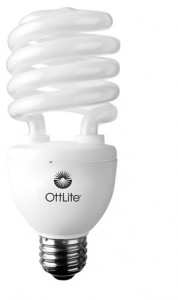If you missed last week's installment of
508 Technology Explained, click here.
Part Two: But wait, there's more...
Last week we learned what light is and how our eyes perceive it. But, the scotopic/photopic sensitivity ratio (s/p) isn’t the end-all be-all of proper lighting. There is also Color Temperature (CT) and Color Rendering (CRi) to consider.
Color Temperature
The CT of a light is the calculated measurement relating the color of a light source to the temperature of a Black Body Radiator. What’s a Black Body Radiator? It’s an idealized concept that doesn’t exist in nature. Too confusing? Don’t worry about it too much, because actually CT can be fudged.
Fluorescent bulbs emit a much lower CT than incandescent bulbs, which emit light at around 2750K, however, the light from a fluorescent bulb
appears to be equivalent to a light burning at 5800K. We solve this discrepancy by coining a new term. Correlated color temperature (CCT) means the light temperature is correlative to the Black Body Radiator, rather than qualitative. Thus, a fluorescent bulb emits far less heat and produces a whiter light than a standard incandescent bulb.
Still with me? Okay, let’s keep moving…
Color Rendering Index
CRi quantifies how closely a palette of colors is represented at one light source in comparison to its representation under an ideal or natural light source at the same temperature. An incandescent bulb has a CRi of 100, but it’s a yellow light. Most people judge white light as more correct than yellow, so a white light with a high CRi would be considered an ideal light source.
 Add it up
Add it up
Vision studies have shown that a high s/p aids in performing tasks requiring visual acuity and contrast, such as reading. A perfect ratio is 2.5, but again the light’s CT must be considered because scotopic sensitivity hedges toward higher colors temperatures (bluish). What is needed is a light that has a good s/p ratio and includes the scotopically rich area of the light spectrum that helps with contrast, a high CRi for color accuracy, and a CCT close to that of natural daylight.

Next week, Part 3: OttLite Designs a Better Bulb
You need to
login to comment.